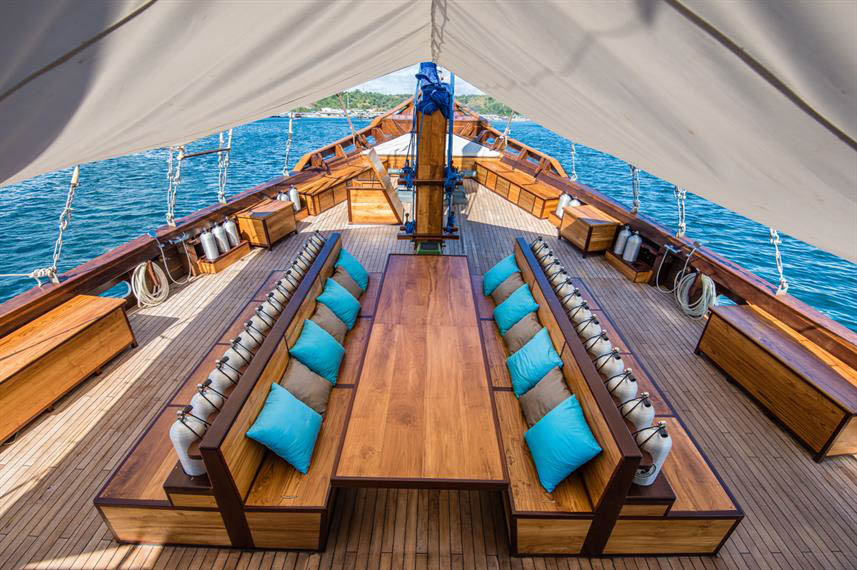White Balance – Colour correction, part 1.
This is a topic I have constantly been putting off, as there are so many different aspects to it, but it has to be addressed, as it is so fundamental to getting good underwater images. Lets face it which image would you prefer?
There are three ways to tackle the problem of the different colour effect produced by taking your pictures underwater. The first is to use strobes or your built in flash. This will only work at quite close distance, maximum of 2m with external powerful strobes. Brilliant for close up macro work and not so good for the harder to approach subjects. The second is to not bother about it at all underwater, and to simply make the adjustments on a computer later. This can involve quite a bit of time, and it can produce decent results but today I am going to concentrate on our third option – getting the balance right on your camera, which means you can get decent results as soon as you hit the button and then share them straight onto Facebook or wherever you like.
Cameras are all designed, by default, to take pictures above the water, and they are pretty good at it. However the dynamics of the light underwater is so different that 99% of cameras just can’t process it in the same way as your brain does. You know what colour your skin is and from there your brain works out the rest. There are two ways to get your camera to get the colours right, a filter or a manual/custom white balance.

Red Filters
You may have also heard “Magic filter”. Magic filter is a trade name as the exact colour of this filter is copywrited. A normal red filter won’t get you the results you need as there is a specific set of blue and green that needs to be filtered out. They are good in depths between 5 – 15 meters, beyond that the colour’s start to go. The vast majority of video cameras will need red filters as their manual white balance, even if they have them, won’t go to the ranges required underwater. The advantage of a Magic filter is that you can put them in your housing and then leave the camera on its normal automatic settings. Depending on your camera and the depth most images captured with filters left on automatic could do with a bit of tweaking on a photo editing program. Once a filter is in the housing you are stuck with them, which means you can’t switch to flash/strobe, or take shots that don’t look red on the surface.

Custom/Manual White Balance
With Manual White balance you can get almost perfect pictures with every shot and you will almost certainly a better result than with most other methods. It does involve you getting to know your camera a little and, OMG yes RTFM. Not the whole manual, obviously, that is beyond the pale, but the section on Custom/Manual white balance. Once learned it is important to check how to do this with the camera in the housing.

All cameras are different, but generally the principal is that you go to the menu, and hit open the Custom/Manual white balance. Most cameras will open the menu on the item where you last opened it, so once you have found where it is, this is a lot easier as it’s the only item on the menu that you use when diving usually. In order to get it to work you have to get the camera to take a sample, some will do this with the press of a button, some will want to work from a photo you have just taken. What to sample? What your camera would like you to take with you is a grey colour board, or according to this manual a white piece of paper, that you can fill the viewer finder. However, all you need is a shot without a colour bias. You could just take a general shot in the area you want to take your photos, but most divers will have aluminium tanks held on a black BCD, take a sample shot on your buddies tank. If you are diving with steel tanks that are painted a nice bright yellow, this may not be an option. If you don’t have the tank option, and go for the general view shot, try to avoid anything with an obvious colour bias, such as your buddies hi vis fluorescent orange rash vest or a vista of blue antler coral.

Once you have a colour balance then you’re fine for shooting in that general depth. So if you start deep get one at 25m then when you get up to 15m take another one. If you have time take one before you take a special shot, or on dives when its clear and sunny and you are changing from shooting towards the sun or away from it.
Remember to have your flash turned off. Most of your shots will be beyond its range, but little bits of detritus or tiny bubbles will not and you can end up with nice little red circles in your shots, like I used to get all the time. Your camera’s flash also drains the battery.
It may seem a little complex, but it really is just a matter of getting used to using those buttons on the camera and you don’t have to spend half your dive fiddling with your camera, but you will get shots that will shock you that they look soooo much better.
Have fun diving!






